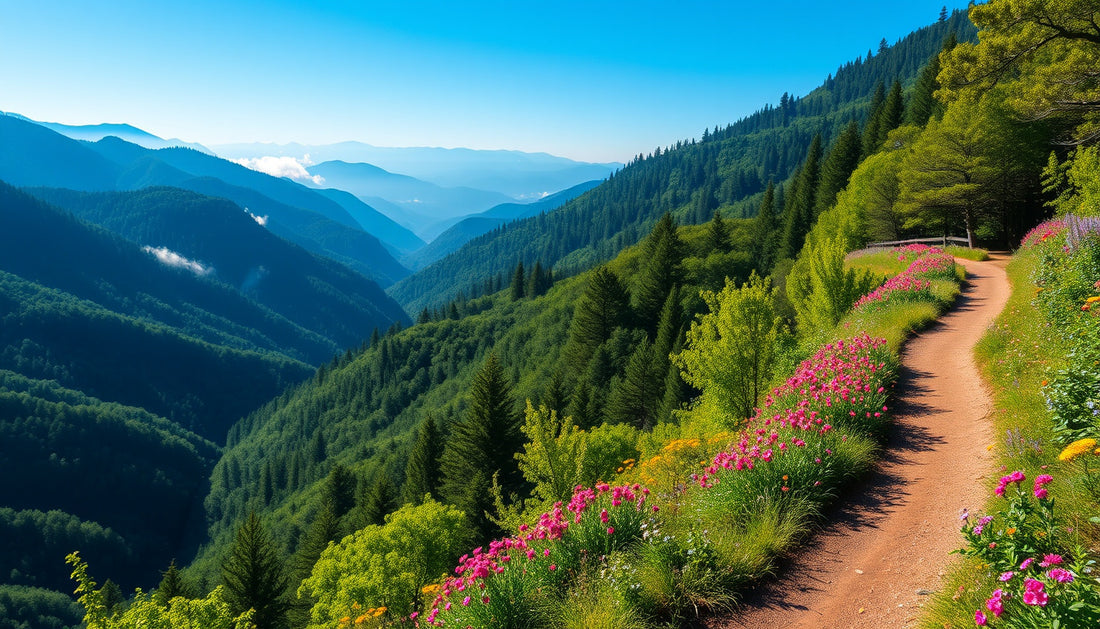
Explore the Breathtaking Beauty: A Complete Guide to Visiting Great Smoky Mountains National Park
Share

Are you ready to immerse yourself in one of America’s most stunning natural wonders? Visiting Great Smoky Mountains National Park offers an unforgettable experience filled with lush forests, mist-shrouded peaks, diverse wildlife, and rich cultural history. Whether you're a seasoned hiker, a wildlife enthusiast, a history buff, or simply someone seeking peace amid nature’s grandeur, the Smokies have something to enchant every visitor.
Why Visit Great Smoky Mountains National Park?
Straddling the border of Tennessee and North Carolina, Great Smoky Mountains National Park is the most visited national park in the United States. Why does it attract millions every year? Here are some compelling reasons:
- Biodiversity hotspot: The park harbors over 19,000 documented species of plants, animals, fungi, and other organisms — and scientists estimate many more remain undiscovered.
- Ancient mountain landscape: The Smokies boast some of the oldest mountains in the world, formed over 200 million years ago.
- Distinctive misty views: The characteristic smoky haze from vegetation release of water vapor creates breathtaking panoramic views.
- Rich cultural heritage: With remnants of early Appalachian settlements and historic buildings, the park offers a glimpse into past rural life.
Environmental ecologist Dr. Sarah Michaels notes, “The Great Smoky Mountains are more than just scenic beauty; they’re a vital refuge where ecosystems and history coexist — a living lab for conserving biodiversity and understanding human impact.”
What to Expect: Highlights and Experiences
Hiking and Trails
The park features over 850 miles of maintained trails catering to all skill levels. Whether you want a leisurely stroll or a challenging backcountry trek, you’ll find a trail perfect for you.
- Alum Cave Trail: 5 miles round-trip, scenic views, geological formations.
- Clingmans Dome: The highest point in the park at 6,643 feet, accessed via a paved trail to an observation tower.
- Roaring Fork Motor Nature Trail: A 5.5-mile one-way loop suited for a driving tour interspersed with short walking paths.
Why hike here? Every trail offers a unique glimpse into the diverse plant life and habitats, from dense old-growth forests to sparkling mountain streams.
Wildlife Watching
The Smokies are home to a wide variety of wildlife:
- Over 1,500 black bears
- White-tailed deer
- Elk, reintroduced after being absent for a century
- Over 200 bird species
Wildlife expert John Riggs advises, “Visit during dawn or dusk for the best chance to see animals in their natural habitat while respecting their space.”
Cultural and Historical Sites
Explore remnants of Appalachian pioneer life including:
- Cades Cove: A verdant valley with preserved 19th-century churches and homes, accessible by an 11-mile loop road.
- Historic schools and mills scattered throughout the park
- Museums and visitor centers detailing Cherokee heritage and early settlers’ stories
Practical Information to Plan Your Visit
- Best time to visit: Spring (April-May) and fall (September-November) for mild weather and spectacular foliage.
- Entry fees: There is no entrance fee to the park, making it accessible to everyone.
- Lodging: Options include campgrounds, rustic cabins, and nearby hotels in Gatlinburg, TN, and Cherokee, NC.
- Safety tips: Stay on marked trails, carry adequate water, and be bear aware.
Park ranger Emily Owens emphasizes, “Planning ahead and being prepared help make your visit safe, enjoyable, and respectful to the park’s delicate ecosystems.”
Why Preservation Matters
Great Smoky Mountains National Park is not just a destination — it’s a treasure trove of biodiversity and cultural history we all share. By practicing Leave No Trace principles and supporting conservation efforts, visitors help protect this marvel for future generations.
Did You Know?
- The park spans over 522,000 acres.
- It was designated as a UNESCO World Heritage Site and International Biosphere Reserve.
- It contains some of the most diverse temperate forests in North America.
In the words of environmentalist John Muir, “In every walk with nature, one receives far more than he seeks.” Visiting the Smokies offers a profound connection to nature’s beauty and resilience, a bond reverberating well beyond the mountains themselves.
Ready to Explore?
Are you inspired to experience the enchanting landscapes of Great Smoky Mountains National Park firsthand? Pack your hiking boots, camera, and curiosity, and dive into the adventure that awaits! Remember, every visit is a step toward appreciating and preserving our natural heritage.
Your call to action: Plan your trip today, follow ethical outdoor practices, and share your Smoky Mountains stories to inspire others. Let’s protect and celebrate this extraordinary national park together!






